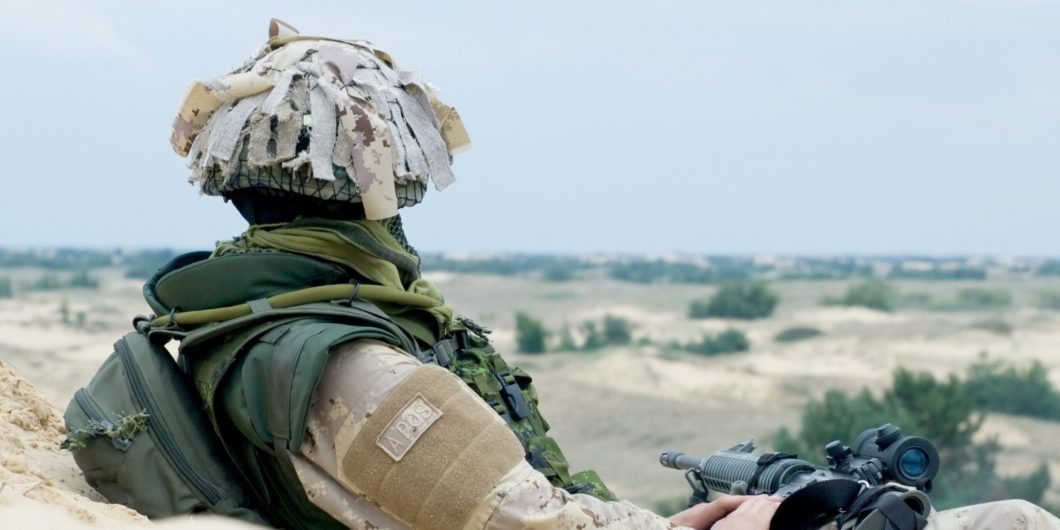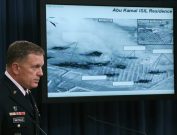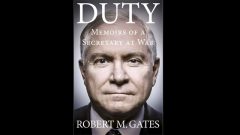No Policy, No Strategy, No End?
In his Florentine Histories, Niccolò Machiavelli noted that starting a war is a lot easier than concluding one on desirable terms. Analysts recognizing this truism give increasing attention to exit strategies along with the perennial question of how wars begin. Afghanistan, where the United States continues to wage the longest war in its history, brings the issue into particular focus. What went wrong there and how can it be made right by ending the conflict in a way that secures American interests?
A December 2019 Washington Post series by Craig Whitlock on a government study of U.S. efforts in Afghanistan put these questions briefly into the headlines. The “Lessons Learned” study by the Office of the Special Inspector General for Afghanistan Reconstruction drew comparisons to the Pentagon Papers which Defense Secretary Robert McNamara ordered to analyze the roots of American failure in Vietnam. Daniel Ellsberg leaked those documents to the New York Times which published them over government objection in 1971. While both episodes reveal a startling official lack of candor, there is at least one revealing difference: Unlike the public scandal sparked by the Pentagon Papers, the Afghanistan Papers have been largely ignored. These new revelations, however, deserve a closer look and wider debate.
Whitlock shows that military and civilian leaders have long recognized the war in Afghanistan has failed. The only success had been the public relations effort undertaken to keep Afghanistan out of the headlines and bolster the reputations of military commanders. So long as American casualties are low and terrorist groups are at bay, the conflict simmers at a low level and avoids the kind of public attention that might impose political costs. It remains, however, a distraction from other pressing concerns overseas. The report also highlights a waste of money and lives, as well as a troubling failure to coordinate policy, strategy, and military operations.
“We Didn’t Know What We Were Doing”
The Washington Post series focuses primarily on 2,000 pages of supporting transcripts rather than the official reports which were “written in dense bureaucratic prose and focused on an alphabet soup of government initiatives,” and which omitted “the harshest and most frank criticisms from the interviews.” Highlighted quotes in the online version link to original transcripts. Parts one and two of the Post series lay out the problem in Afghanistan and the last four cover specific problems.
The original Afghan campaign had the clearly stated aims of retaliating for the September 11, 2001 attacks and preventing their recurrence. Bringing Osama bin Laden to justice provided more than enough grounds for war. But Lieutenant General Douglas Lute, who oversaw the war from the National Security Council during the Bush and Obama administrations, later said “We were devoid of a fundamental understanding of Afghanistan—we didn’t know what we were doing.” While rapid success on the ground with support from local proxies brought down the Taliban government, the mission quickly changed in unanticipated ways.
Rather than stepping back after initial success, the United States led a stabilization effort without a reassessment of its goals. Some officials sought to turn Afghanistan into a democracy, others aspired to change its culture and promote human rights, while a further group hoped to recast the regional balance of power. Mission creep produced the kind of nation-building project George W. Bush had opposed during the 2000 election campaign. Nobody set priorities or resolved contradictions. An official said the strategy had “a present under the Christmas tree for everyone…by the time you were finished you had so many priorities and aspirations it was like no strategy at all.”
American and allied military forces also lacked clarity on who they were fighting. Distinguishing friend from foe posed difficulties given competing factions in an alien environment. Limited human intelligence complicated operations. Unable to eradicate the Taliban, American officials refused to negotiate and divide its leadership by accommodating those willing to join the new government. A shift in focus to Iraq reduced the U.S. troops available to provide security and allowed the Taliban to regroup even as Defense Secretary Donald Rumsfeld announced the end of major combat activity in Afghanistan.
He spoke too soon. Renewed unrest brought U.S. and NATO forces up to 50,000 by March 2007 without improving security. Commanders reacted to insurgent activity rather than seizing the initiative with a coordinated approach of their own. The surge in Iraq gave General Stanley McChrystal a model for a “properly resourced” campaign. President Barak Obama accepted higher troop levels but imposed an 18-month deadline that gave the Taliban hopes of waiting out U.S. efforts. The deadline, an advisor said, precluded the strategy. Poor relations between McChrystal and Obama brought on the former’s dismissal after ill-advised remarks in a published interview with Rolling Stone magazine.
The strategy from Iraq fit poorly in Afghanistan. Soldiers on the ground said they lacked clear directions on how to “clear, hold and build” so Afghans could take their place. A few interviewees thought the strategy was “based on buzzwords and lacked substance.” Distinguishing friend from foe remained a problem, especially with Afghan soldiers and police turning against troops who trained them. Unrest and collateral damage alienated civilians not only from U.S. and allied forces, but also from their own government in Kabul. Pakistan gave insurgents a refuge Washington could not close down. Taliban numbers, estimated by General David Petraeus at around 25,000 in 2011, had more than doubled by 2019 to some 60,000.
Other factors contributed to failure. Installing a centralized democratic government under Hamid Karzai did not fit the realities of a tribal country which, when it had been effectively governed at all, had always been governed by consensus. Karzai understood the old patronage system, but it went against the model the United States sought to impose. Doctrinaire laissez-faire did not help a primitive economy lacking functioning markets. One expert, Barnett Rubin, thought price controls and subsidies would more effectively foster economic development, but that went against policy in Washington. The result made foreign aid a futile exercise.
More money went into Afghanistan than could be spent usefully. A Special Forces officer described building new schools alongside empty older ones. Corruption absorbed most of the money, and not the kind of “honest graft” that greases the wheels of political trading or facilitates infrastructure development. Afghanistan’s government by 2006 had “self-organized into a kleptocracy” that allowed unrestrained looting. Gert Berthold, a forensic accountant, oversaw an assessment that concluded 40 percent of aid went to insurgents, criminal syndicates, or corrupt Afghan officials. Spreading like metastatic cancer, corruption overwhelmed the government’s popular legitimacy and its effectiveness.
Colonel Bob Crowley described the Afghanistan war as “a self-licking ice cream cone.” This phrase from academic studies of bureaucracy denotes a system whose only point is to perpetuate itself. Whitlock describes persistent efforts to show progress where none had been made and to push back against doubts. Public relations seems to have been the war’s most successful operation. Knowing one thing but saying another echoes the earlier revelations in the Pentagon Papers. Whitlock’s focus on spin highlights the core dilemma military and civilian leaders faced. Having gotten so deeply into Afghanistan, how could the United States withdraw at an acceptable cost? The answer seemed to be that it could not. So decision-makers opted to just keep going with minimal American casualties, deflect media coverage, and hope a solution turned up.
The Broader Picture
Whitlock’s story points to a larger failure of the United States since the Cold War to coordinate policy and strategy. Hew Strachan, a leading British military historian, addressed the problem in The Direction of War: Contemporary Strategy in Historical Perspective. He explores how policy, which is developed by political leaders to set national aims and priorities, differs from strategy, which is developed by military professionals and crafted to achieve policy goals. Policy by its nature has a unilateral thrust, but strategy operates in a reciprocal environment of conflict with rival states and non-state actors. Without a dialogue between commanders and their political masters to align the two, operations lack focus or coordination. Strachan points to the German Wehrmacht’s inability to capitalize on tactical prowess and battlefield success as an example of such a misalignment.
Since the 1990s, Strachan argues persuasively, the United States has not used strategy effectively to turn operational successes into desired political outcomes. Like Iraq, Afghanistan shows how efforts falter when the means employed have not been matched to both military aims and larger political objectives behind them. The operational art, as professionals describe warfighting doctrine, sometimes substitutes for strategy, but it cannot answer pivotal larger questions like how this situation ends. A complaint Whitlock cites by Jeffrey Eggers, a former White House official under Bush and Obama, shows the difficulty of coping with the results: “Collectively the system is incapable of taking a step back to reassess.”
Context matters in developing strategy to manage the friction and uncertainty of war. Early success in Afghanistan convinced observers that firepower, mobility, and determination could overcome impediments that had doomed earlier Russian and British interventions. Closer study of those episodes and the structure of Afghan society suggests the country would be easy to occupy but hard to govern and very difficult to stabilize through development. Rudyard Kipling’s story “The Man Who Would be King”—and the 1975 film made from it—shows the underlying dynamic in brief. A quick intervention to wipe out al Qaeda and punish the Taliban, followed by the establishment of a decentralized, consensus government—with the understanding that regional governments could give no refuge to terrorists—would have best fit Afghan circumstances. It would also have used Western capabilities and international support most effectively to secure American interests.
The United States took a different path, however. A project of nation-building pursued more by default than by choice has not delivered. Easy to get into, as Machiavelli’s remark suggests, the Afghanistan conflict has become hard to end. Decisions followed the pressure of events rather than a conscious plan grounded on local realities and weighing American ends and means. The political cost in Washington of abandoning educational initiatives and promoting female autonomy deterred reassessment. So too did concerns about regional security. Once committed, senior military figures seemed loath to withdraw short of scoring a win. Reputations were at stake. But the Afghanistan Papers show it is past time to write off sunk costs and find a way out. This is easier said than done, perhaps, but it is more realistic than doing the same thing and expecting a different outcome.


